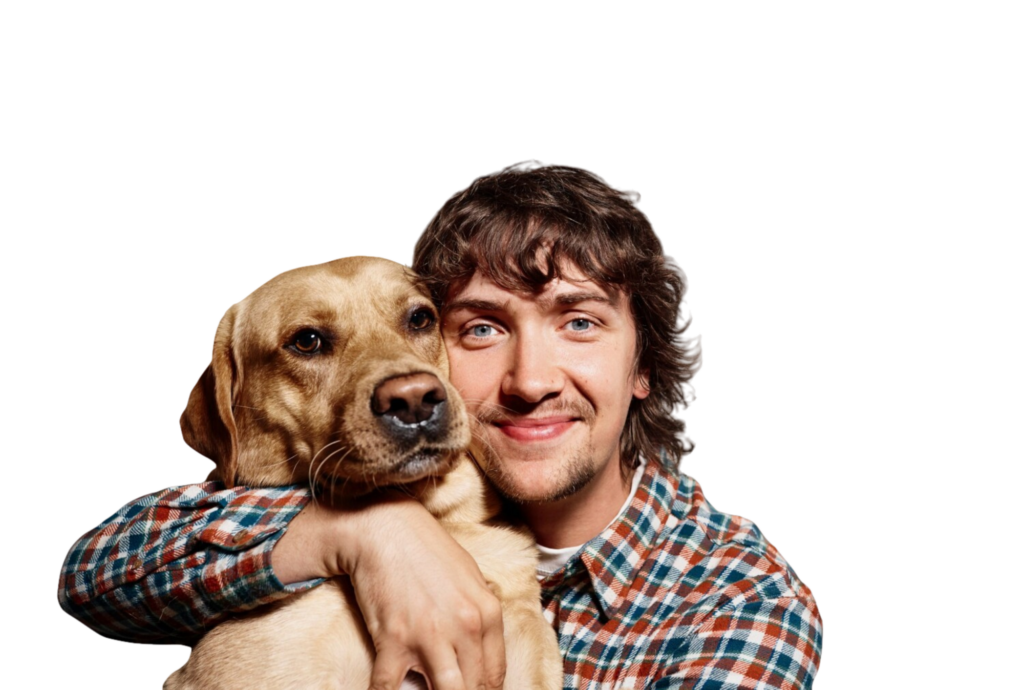Bringing home a new dog can be an incredibly rewarding experience. From providing companionship to improving your mental health, the benefits of dog ownership are numerous. However, adopting a new dog is a significant decision that requires careful consideration. Whether you’re a first-time dog owner or looking to add to your pack, there are several factors to take into account before taking the plunge. In this blog post, we’ll explore the benefits of adopting a new dog, as well as the challenges that come with it. We’ll offer tips on how to choose the right dog for your household, prepare your home for your new pet, and ensure a smooth transition for both you and your new furry friend.
Aspects to consider before adopting
Deciding to adopt a new dog is a big decision and should be based on several factors. Here are a few things to consider before making a decision:
Lifestyle
Think about your current lifestyle and whether you have the time, space, and resources to care for a new dog. Dogs require attention, exercise, and regular dog grooming, so make sure you can commit to providing these things before adopting a new pet.
Budget
Adopting a new dog comes with expenses, such as food, toys, bedding, veterinary care, and potentially training or behavior modification. Make sure you have the financial resources to provide for a new dog’s needs.
Compatibility
Consider the compatibility of your current dog and any potential new dog. If you have a dog already, it’s important to introduce them properly to make sure they get along. You’ll also want to consider the breed, age, and energy level of the new dog to make sure they are a good match for your household and lifestyle.
Time commitment
Adopting a new dog requires a significant time commitment. Be prepared to spend time training, socializing, and bonding with your new pet.
Potential challenges
Dogs come with challenges, such as health issues, behavior problems, and potential conflicts with other pets or people. Make sure you’re prepared to handle any challenges that may arise and have a plan in place to address them.
If you feel that you’re ready to provide a loving and stable home for a new dog and have carefully considered these factors, then adoption can be a rewarding experience for both you and your new pet. Be sure to do your research and find a reputable shelter or rescue organization to adopt from, and take the time to choose the right dog for you and your family.
Is owning two dogs better than owning one?
Whether having two dogs is better than having one depends on various factors, such as the owner’s lifestyle, living situation, and the dogs’ individual personalities and needs. Here are some potential benefits of having two dogs:
Companionship
Dogs are social animals that enjoy the company of other dogs. Having two dogs can provide each other with companionship and reduce the risk of loneliness and boredom.
Exercise and play
Two dogs can play and exercise together, which can be especially beneficial for high-energy breeds that need lots of physical activity. This can also help prevent destructive behavior caused by boredom.
Training
Two dogs can learn from each other and help with training. For example, a well-behaved dog can serve as a role model for a younger or less experienced dog.
Mental stimulation
Two dogs can provide mental stimulation for each other through play and social interaction, which can help prevent anxiety and depression.
Protection
Having two dogs can provide an added layer of protection for your home and family. Dogs are territorial animals that will defend their pack, and having two dogs can make it more difficult for intruders to enter your property.
However, it’s important to note that having two dogs can also come with additional responsibilities and expenses, such as training, feeding, and veterinary care. It’s important to ensure that you can provide enough time, space, and resources for both dogs before making the decision to adopt another pet.
How to choose the right dog for your home
Choosing the right dog for your home is an important decision that requires careful consideration. Here are some factors to consider when selecting a new dog:
Size
Consider the size of your home and yard when choosing a dog. Larger breeds may require more space to move around and exercise, while smaller breeds may be more suited to smaller living spaces.
Energy level
Dogs have different energy levels and exercise requirements. Consider your own lifestyle and activity level when choosing a dog. If you enjoy hiking or running, an active breed like a Labrador Retriever or a Border Collie may be a good fit. If you prefer a more laid-back lifestyle, a breed like a Basset Hound or a Bulldog may be a better match.
Temperament
The temperament of a dog is also an important consideration. Some breeds, such as Golden Retrievers, are known for their friendly and outgoing personalities, while others, like Chihuahuas, can be more reserved. Consider your own personality and lifestyle when selecting a breed that matches your energy level and temperament.
Grooming needs
Different breeds have different grooming requirements. Long-haired breeds like Shih Tzus or Poodles may require more grooming and upkeep, while short-haired breeds like Boxers or Beagles may require less maintenance.
Health concerns
Some breeds are more prone to certain health issues, such as hip dysplasia, allergies, or breathing problems. Research the breed you’re interested in and consider any potential health issues before making a decision.
Consider adoption
Consider adopting a dog from a shelter or rescue organization. These dogs are often already house-trained and socialized, and they may be a better fit for your home and lifestyle than a purebred dog.
By taking these factors into account, you can choose a dog that is a good match for your home and lifestyle. Remember to do your research and consider your own needs and preferences when making this important decision.
10 Most Popular Dog Breeds
There are many dog breeds that can make great pets. Visit the AKC website for an extensive list of the most popular dog breeds. Here’s 10 of the most popular dog breeds:
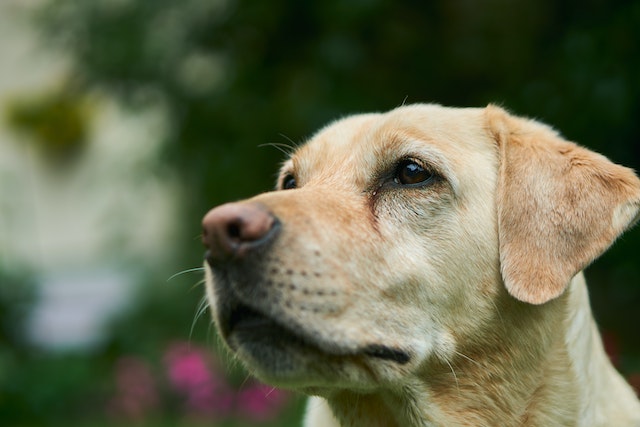
Labrador Retriever
Labrador Retrievers, commonly known as “Labs,” are one of the most popular dog breeds in the world. Labrador Retrievers were originally bred in Newfoundland, Canada, in the early 1800s. At the time, they were known as “St. John’s Water Dogs” or “Lesser Newfoundland Dogs,” and they were used by fishermen to help retrieve fish that had fallen off hooks and escaped their nets.
In the mid-1800s, English sportsmen began importing St. John’s Water Dogs to England, where they were crossed with other breeds such as Setters, Pointers, and Spaniels to produce the modern Labrador Retriever. The breed was named after the Labrador Sea, which is adjacent to Newfoundland.
Labrador Retrievers quickly gained popularity in England and the United States, and they became widely used as hunting and retrieving dogs. Their friendly personalities and trainability also made them popular as family pets and as working dogs in fields like search and rescue, therapy, and law enforcement.
Appearance
Labrador Retrievers are medium to large-sized dogs, typically weighing between 55 and 80 pounds. They have a short, dense, water-resistant coat that can be black, chocolate, or yellow in color.
Temperament
Labs are known for their friendly, outgoing personalities. They’re generally good with children and other pets, and they love to play and be active. They’re also highly trainable and make great service dogs, therapy dogs, and hunting companions.
Exercise Needs
Labs are active dogs and require daily exercise, such as a brisk walk or run. They also love to play and swim, and they excel at activities like retrieving and agility.
Training
Labs are highly trainable and eager to please. They respond well to positive reinforcement training techniques, and they excel at obedience, agility, and other dog sports.
Grooming Needs
Labs have a short, easy-to-maintain coat that only requires occasional brushing. However, they do shed seasonally and may require more frequent brushing during these times.
Health
Like all dog breeds, Labs are prone to certain health conditions. Some common health issues in Labs include hip and elbow dysplasia, eye problems, and obesity.

Bulldog
The Bulldog, also known as the English Bulldog, is a breed that originated in England. Bulldogs were developed in the 16th century for bull-baiting, a cruel blood sport that involved setting a bulldog loose on a tethered bull. The dog would try to pin the bull to the ground by biting its nose and hanging on until the bull was exhausted.
The breed was also used for bear-baiting and other cruel sports. However, over time, attitudes toward animal cruelty changed, and bull-baiting was outlawed in England in 1835. As a result, the Bulldog was no longer bred for aggression and began to be developed as a companion animal.
In the late 1800s, Bulldog breeders began to selectively breed for a more docile temperament and a distinctive physical appearance, including a shorter snout and a more compact body. This breeding led to the modern Bulldog that we know today.
Today, Bulldogs are popular as family pets and are known for their loyalty and affectionate personalities. They’re also used as mascots for sports teams and other organizations. However, the breed’s distinctive physical features, including their short snouts and flat faces, have led to some health problems, including breathing difficulties and skin infections. It’s important for prospective owners to research the breed thoroughly and be aware of the potential health issues before deciding to adopt a Bulldog.
Appearance
Bulldogs are a compact, muscular breed with a distinctive wrinkled face and pushed-in nose. They typically weigh between 40 and 50 pounds and have a short, smooth coat that can be white, fawn, brindle, or a combination of these colors.
Temperament
Bulldogs are known for their affectionate and loyal personalities. They’re typically good with children and make great family pets. They can be stubborn at times, but they respond well to positive reinforcement training techniques.
Exercise Needs
Bulldogs are a low-energy breed and do not require a lot of exercise. Short walks or play sessions are usually sufficient to meet their activity needs.
Training
Bulldogs can be stubborn at times and require consistent and patient training. Positive reinforcement techniques work best, as they respond poorly to harsh or punitive methods.
Grooming Needs
Bulldogs have a short, easy-to-maintain coat, but they require regular cleaning of their wrinkles to prevent skin infections. They also shed seasonally and may require more frequent brushing during these times.
Health
Bulldogs are prone to certain health conditions, including hip dysplasia, breathing problems, and skin infections. It’s important to purchase from a reputable breeder who health tests their breeding dogs to reduce the risk of genetic health problems.
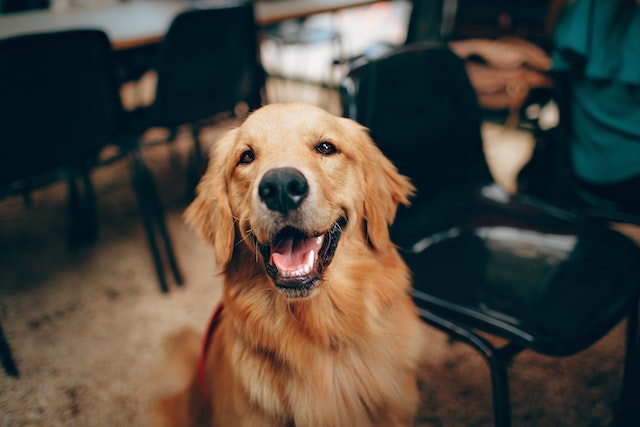
Golden Retriever
Golden Retrievers are a breed of dog that originated in the Scottish Highlands in the late 1800s. They were developed by a man named Dudley Marjoribanks, also known as Lord Tweedmouth, who bred them to be hunting dogs that were skilled at retrieving game birds from water and land.
Marjoribanks started developing the breed by crossing a yellow retriever with a now-extinct water spaniel, and he continued to selectively breed his dogs over several generations to create the Golden Retriever we know today. The breed’s popularity grew in the early 20th century, both as a hunting dog and as a companion animal.
Golden Retrievers have a friendly and loyal personality that makes them a popular choice as a family pet. They’re also used as therapy dogs and as service animals due to their gentle nature and intelligence.
The breed was recognized by the American Kennel Club in 1925, and they remain one of the most popular dog breeds in the world. They’re known for their golden coat, which can range from light cream to deep red, and their outgoing personalities. Golden Retrievers are also versatile dogs and excel in various fields like hunting, obedience, agility, and search and rescue.
Appearance
Golden Retrievers are a medium to large breed, with males typically weighing between 65-75 pounds and females weighing between 55-65 pounds. They have a distinctive golden coat that can range from light cream to a deep reddish-gold color. They are a muscular and athletic breed with a broad head, friendly expression, and a wagging tail.
Temperament
Golden Retrievers are known for their friendly, outgoing, and loyal personalities. They are great with children and are often used as therapy dogs or service animals due to their gentle nature and intelligence. They are also active and love to play, making them a great choice for families who enjoy outdoor activities.
Exercise Needs
Golden Retrievers are an active breed and require regular exercise to stay healthy and happy. They should have at least 30 minutes of exercise a day, but they will happily go for longer walks, hikes or play sessions with their owners.
Training
Golden Retrievers are intelligent and eager to please, which makes them easy to train. They respond well to positive reinforcement training techniques and are often used as guide dogs or search and rescue dogs due to their ability to learn complex tasks.
Grooming Needs
Golden Retrievers have a thick double coat that requires regular brushing to prevent matting and tangles. They also shed seasonally, so more frequent brushing may be required during those times.
Health
Golden Retrievers are generally healthy dogs, but they can be prone to certain health conditions like hip dysplasia, cancer, and ear infections. It’s important to purchase from a reputable breeder who health tests their breeding dogs to reduce the risk of genetic health problems.

Beagle
The Beagle breed is believed to have originated in England in the 11th century. The exact origin of the breed is not known, but it is believed that Beagles are descendants of the St. Hubert Hound, a breed that is now extinct.
Beagles were originally bred to hunt small game, such as rabbits and hares, with their keen sense of smell and their ability to track prey. They were also used for hunting larger game, such as deer, in packs. The breed was favored by English royalty, and Queen Elizabeth I was known to keep a pack of Beagles.
The Beagle was first recognized as a breed by the American Kennel Club in 1885. Today, Beagles are still used for hunting, but they are also popular as family pets due to their friendly personalities and small size. They are often used in research labs due to their intelligence and tractability.
Appearance
Beagles are small to medium-sized dogs, with males typically weighing between 22-25 pounds and females weighing between 20-23 pounds. They have short, smooth coats that are usually tricolored (black, tan, and white), although they can also come in other colors. They have long, droopy ears and a friendly expression.
Temperament
Beagles are known for their friendly, curious, and outgoing personalities. They are good with children and other pets and are generally easygoing. They are also active and love to explore, making them a great choice for families who enjoy outdoor activities.
Exercise Needs
Beagles are an active breed and require regular exercise to stay healthy and happy. They should have at least 30-60 minutes of exercise a day, but they will happily go for longer walks, hikes or play sessions with their owners.
Training
Beagles are intelligent dogs, but they can also be stubborn and independent. They respond well to positive reinforcement training techniques, but may need a bit of extra patience and persistence to fully train. They are also known for their exceptional sense of smell, which can make training them to come when called a bit more challenging.
Grooming Needs
Beagles have short coats that are easy to care for. They do shed seasonally, so regular brushing may be needed during those times. Their long, droopy ears can also be prone to ear infections, so it’s important to clean them regularly.
Health
Beagles are generally healthy dogs, but they can be prone to certain health conditions like hip dysplasia, ear infections, and obesity. It’s important to purchase from a reputable breeder who health tests their breeding dogs to reduce the risk of genetic health problems.
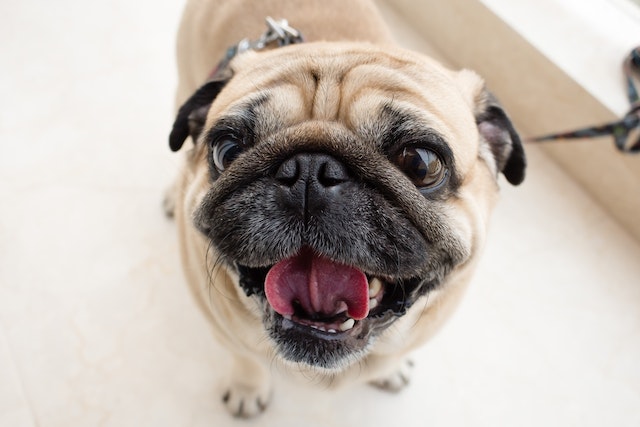
Pug
Pugs were originally bred as companion dogs for Chinese royalty and were highly valued for their cute and affectionate personalities. They were considered a luxury item and were only allowed to be owned by members of the royal court.
Pugs eventually made their way to Europe, where they became popular in the 16th and 17th centuries. They were particularly favored by the ruling families of the Netherlands and were often depicted in portraits alongside their owners. In the 18th century, Pugs were introduced to England and quickly became a popular breed among the upper classes. They were often seen in paintings and sculptures and were even used as a symbol of the Whig political party.
Pugs were first recognized as a breed by the American Kennel Club in 1885. Today, Pugs are popular family pets and are known for their playful and affectionate personalities. They are also often used in advertisements and in the entertainment industry due to their cute and expressive faces.
Appearance
Pugs are a small breed of dog, weighing between 14-18 pounds. They have a distinctive flat, wrinkled face, round, dark eyes, and a curly tail. They come in a range of colors, including fawn, black, and silver.
Temperament
Pugs are known for their playful and affectionate personalities. They are very social dogs and love to be around people. They are also good with children and other pets, making them a popular family pet.
Exercise Needs
Pugs are not a highly active breed and can be content with moderate exercise. They should have at least 20-30 minutes of exercise a day, such as a short walk or playtime in the backyard. However, it’s important not to over-exercise them in hot weather, as their flat faces can make it difficult for them to breathe.
Training
Pugs can be stubborn and difficult to train, but they respond well to positive reinforcement techniques. They are intelligent dogs and can learn a range of tricks and commands.
Grooming Needs
Pugs have a short, smooth coat that is easy to care for. However, they do shed quite a bit and may require frequent brushing to keep their coat looking its best. It’s also important to clean the folds of their skin regularly to prevent skin infections.
Health
Pugs are generally healthy dogs, but they can be prone to certain health conditions due to their unique physical features. They are known to have breathing difficulties, eye problems, and joint issues. It’s important to purchase from a reputable breeder who health tests their breeding dogs to reduce the risk of genetic health problems.
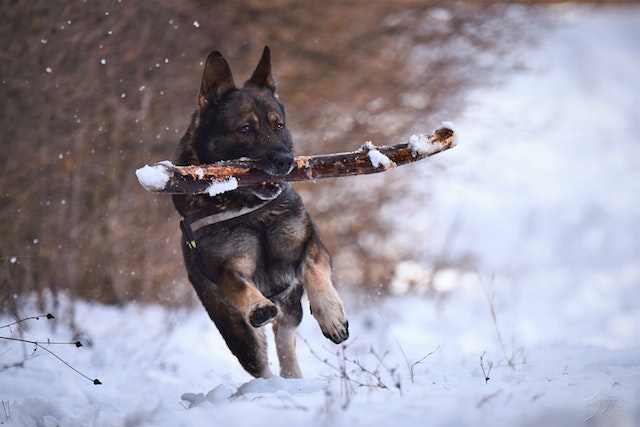
German Shepherd
The German Shepherd breed was developed by a man named Max von Stephanitz, who was a retired German cavalry captain. He set out to create the ultimate herding dog, one that was intelligent, athletic, and obedient.
In 1899, von Stephanitz attended a dog show and was impressed by a dog named Hektor Linksrhein. He purchased the dog and renamed him Horand von Grafrath, making him the foundation of the German Shepherd breed.
Von Stephanitz established the first German Shepherd breed club in 1899 and began breeding the dogs for use as police and military dogs. During World War I, German Shepherds were used by the German army as messengers, guard dogs, and sentries.
After the war, German Shepherds gained popularity around the world and were used for a wide range of purposes, including search and rescue, police work, and as guide dogs for the blind. Today, they remain a popular breed and are known for their intelligence, loyalty, and versatility.
Appearance
German Shepherds are a large breed, weighing between 50 and 90 pounds. They have a distinctive, muscular build and a double coat that can come in a variety of colors, including black, sable, and white. They are known for their erect ears and alert, intelligent expression.
Temperament
German Shepherds are highly intelligent and loyal dogs that bond strongly with their owners. They are known for their courage and protective instincts, making them popular as police and military dogs. They are also highly trainable and can excel in a wide range of activities, including obedience, agility, and search and rescue.
Exercise Needs
German Shepherds are an active breed and require regular exercise to stay healthy and happy. They should have at least 30-60 minutes of exercise a day, such as a brisk walk, a run, or playtime in the backyard. They also thrive on mental stimulation, such as training, puzzle toys, and games.
Training
German Shepherds are highly trainable dogs and excel in obedience and agility training. They are also commonly used as service and working dogs due to their intelligence and willingness to please. It’s important to start training early and use positive reinforcement techniques to build a strong bond with your dog.
Grooming Needs
German Shepherds have a thick, double coat that requires regular brushing to keep it looking its best. They also shed seasonally and may require more frequent brushing during shedding periods. It’s also important to trim their nails regularly and clean their ears to prevent infections.
Health
German Shepherds are generally healthy dogs, but like all breeds, they can be prone to certain health conditions. These can include hip and elbow dysplasia, bloat, and certain genetic conditions. It’s important to purchase from a reputable breeder who health tests their breeding dogs to reduce the risk of genetic health problems.

Poodle
The exact origins of the Poodle are unclear, but it is believed that they were originally bred to be water retrievers, especially for duck hunting. They are thought to be descended from various European water dogs, including the Barbet and the Portuguese Water Dog.
The Poodle became popular in France in the 18th century, where they were favored by the nobility and used as circus dogs. They were also popular in other European countries and eventually spread to the United States, where they were recognized by the American Kennel Club in 1887.
Overall, Poodles are a popular and versatile breed of dog that are known for their intelligence, affectionate nature, and elegant appearance. They are suitable for a wide range of owners, from families with children to seniors, as long as their grooming needs and energy levels are taken into account.
Appearance
Poodles come in three sizes: Standard, Miniature, and Toy. The Standard Poodle stands over 15 inches tall at the shoulder and weighs between 45 and 70 pounds. The Miniature Poodle is between 10 and 15 inches tall and weighs between 10 and 15 pounds. The Toy Poodle is under 10 inches tall and weighs between 4 and 6 pounds. Poodles have a thick, curly coat that is hypoallergenic and sheds very little. The coat comes in a variety of colors, including white, black, brown, gray, apricot, and red.
Temperament
Poodles are highly intelligent and trainable dogs that are known for their loyalty and affection towards their owners. They are also known for their energy and playfulness, and can make great companions for families with children. Poodles are also popular as service dogs due to their intelligence and trainability.
Exercise Needs
Poodles are active dogs that require regular exercise to keep them healthy and happy. They enjoy walks, runs, and playing games with their owners.
Training
Poodles are highly trainable dogs and are known for their ability to learn quickly. They are often used as performing dogs in circuses and shows due to their trainability and intelligence.
Grooming Needs
Poodles require regular haircuts to maintain their coat. Depending on the size and style of the poodle, haircuts should be done every 6-8 weeks.
Health
Poodles are generally healthy dogs, but like all breeds, they can be prone to certain health conditions, including hip dysplasia, progressive retinal atrophy, and skin allergies.
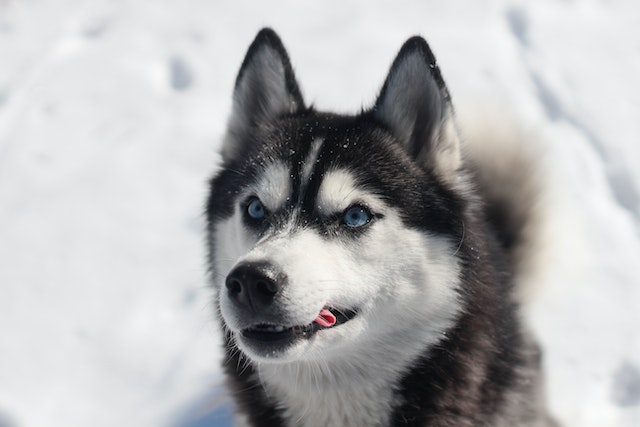
Siberian Husky
Siberian Huskies were developed by the Chukchi people, who were indigenous people of the eastern Siberian region. The Chukchi people used the dogs for transportation and as a hunting companion. They relied on the dogs’ strength and endurance to travel long distances in the harsh Arctic environment. The Siberian Husky was also used to help pull sleds during the Alaskan gold rush of the late 1800s.
In the early 1900s, the breed was introduced to North America, and it quickly became popular as a sled dog for racing and exploration. The breed was recognized by the American Kennel Club in 1930, and its popularity grew throughout the 20th century.
Today, the Siberian Husky is still used as a working dog in sled racing and other outdoor activities, but it’s also a popular family pet due to its friendly and playful nature. The breed is known for its loyalty, intelligence, and endurance, and it’s a popular choice for people who live in colder climates.
Appearance
Siberian Huskies have a thick, double coat that is designed to keep them warm in cold weather. Their coat can come in a variety of colors, including black, gray, red, and white. They have blue or brown eyes, or sometimes one of each, which is known as “bi-eyed.”
Temperament
Siberian Huskies are known for their friendly and outgoing nature. They are very social dogs and love being around people and other dogs. They are intelligent, independent, and have a strong instinct to roam, which means they require plenty of exercise and mental stimulation.
Exercise Needs
Siberian Huskies are high-energy dogs and require a lot of exercise. They love to run and play, and they do well in outdoor activities such as hiking, running, and sledding. They need at least 30-60 minutes of exercise every day to keep them healthy and happy.
Training
Siberian Huskies are intelligent dogs but can be stubborn and independent. They require consistent and patient training to learn basic commands and good behavior. Positive reinforcement training methods work well with this breed.
Health
Siberian Huskies are generally a healthy breed, but they are prone to certain health issues, such as hip dysplasia, eye problems, and skin allergies. Regular check-ups with a veterinarian can help identify and manage any health problems.

Dachshund
The breed was developed in the 16th century to hunt badgers, hence the name “Dachshund,” which means “badger dog” in German. The breed was designed to be low to the ground and have a long, narrow body to help it hunt badgers in their dens. They were also used to hunt other small animals such as rabbits and foxes.
The Dachshund became very popular in Germany, and by the 1800s, there were three different sizes of Dachshund: Standard, Miniature, and Toy. In the early 1900s, the breed was introduced to the United States and quickly became popular.
Today, Dachshunds are still used for hunting, but they are also popular family pets due to their affectionate and playful nature. They are known for their long, low-slung bodies, which can make them prone to certain health issues such as back problems.
Appearance
Dachshunds come in three different sizes: standard, miniature, and toy. They have a long, narrow body and short legs, and their coat can be smooth, wirehaired, or longhaired. They come in a variety of colors, including black, tan, red, and chocolate.
Temperament
Dachshunds are affectionate and loyal dogs, but they can also be stubborn and independent. They are known for their playful and energetic personalities and love to be around people. They are good with children, but due to their hunting background, they may have a strong prey drive and be inclined to chase small animals.
Exercise Needs
Dachshunds are small dogs but they require daily exercise to keep them healthy and happy. They enjoy walks and playtime, but they should not be allowed to over-exert themselves or jump off high surfaces, as their long backs make them prone to back problems.
Training
Dachshunds can be stubborn and independent, so training requires patience and consistency. Positive reinforcement methods work well with this breed, and early socialization is important to help them get along with other pets and people.
Health
Dachshunds can be prone to certain health issues, such as back problems, obesity, and dental issues. Regular veterinary check-ups can help identify and manage any health issues.

Australian Shepherd
The breed is believed to have originated in the 19th century as a herding dog in the western United States. Australian Shepherds were used to help ranchers herd and manage livestock such as sheep and cattle. The breed’s agility and high energy made them well-suited for this work.
The Australian Shepherd became more popular in the mid-20th century when it was used as a performance dog in rodeos and other events. In the 1950s, the breed was recognized by the American Kennel Club (AKC) and has since become a popular companion dog as well as a working dog.
Today, Australian Shepherds are known for their intelligence, high energy, and affectionate nature. They are often used in dog sports such as agility and obedience, as well as in search and rescue work. They are also popular family pets due to their loyal and loving personalities.
Appearance
Australian Shepherds are medium-sized dogs that typically weigh between 40 and 65 pounds. They have a thick double coat that can be black, blue merle, red, or red merle, with or without white and/or copper markings. They are known for their distinctive “bobtail” or naturally short tail.
Temperament
Australian Shepherds are highly intelligent and eager to please, making them easy to train. They are known for their loyalty and affection towards their families, but can be reserved or aloof around strangers. They have a high energy level and require daily exercise and mental stimulation to stay happy and healthy.
Exercise Needs
Australian Shepherds are an active breed and require daily exercise to burn off their energy. They excel in dog sports such as agility, obedience, and herding trials. They also make great hiking or running companions.
Training
Australian Shepherds are highly trainable and thrive with positive reinforcement methods. Their strong herding instinct may need to be channeled in appropriate ways to prevent unwanted behaviors such as nipping or herding people.
Health
Like all breeds, Australian Shepherds may be prone to certain health issues, such as hip dysplasia, eye problems, and epilepsy. Regular veterinary check-ups can help identify and manage any health issues.
How to prepare your home before adoption
Adopting a dog is an exciting experience, but before bringing your new furry friend home, it’s important to prepare your home for their arrival. Here are some tips to help you get your home ready.
Designate a space for your new dog
Before bringing your new dog home, it’s important to designate a specific space for them to eat, sleep, and relax. This will help them feel comfortable and secure in their new environment. Consider setting up a cozy dog bed, a crate, and some toys in a quiet, low-traffic area of your home.
Puppy-proof your home
Just like a curious toddler, a new dog may be prone to exploring and getting into things they shouldn’t. To keep your new pet safe, remove any potentially dangerous items, such as electrical cords, cleaning supplies, and small objects that your dog could swallow. Make sure to store food, medications, and other hazardous materials in secure cabinets or on high shelves.
Purchase the necessary supplies
Before bringing your new dog home, make sure you have all the necessary supplies on hand, such as food and water bowls, a leash and collar, a crate or carrier, toys, and grooming supplies.
Consider any existing pets
If you have other pets in your home, it’s important to introduce them to your new dog slowly and carefully. Consider setting up a separate space for your new pet initially and gradually introduce them to your other pets under supervision.
Plan for potty training
Potty training is an important aspect of bringing a new dog home. Plan to take your new dog outside frequently to help them learn where they should go potty. Consider setting up a designated area in your yard for them to do their business.
By taking the time to prepare your home before bringing your new dog home, you can help ensure a smooth transition and set the stage for a happy and healthy life together.
Thank you for reading
We will be posting in-depth blog posts related to dog grooming, dog breeds, dog training tips, and much more. Don’t forget to tag us on Instagram or follow our FaceBook page!



